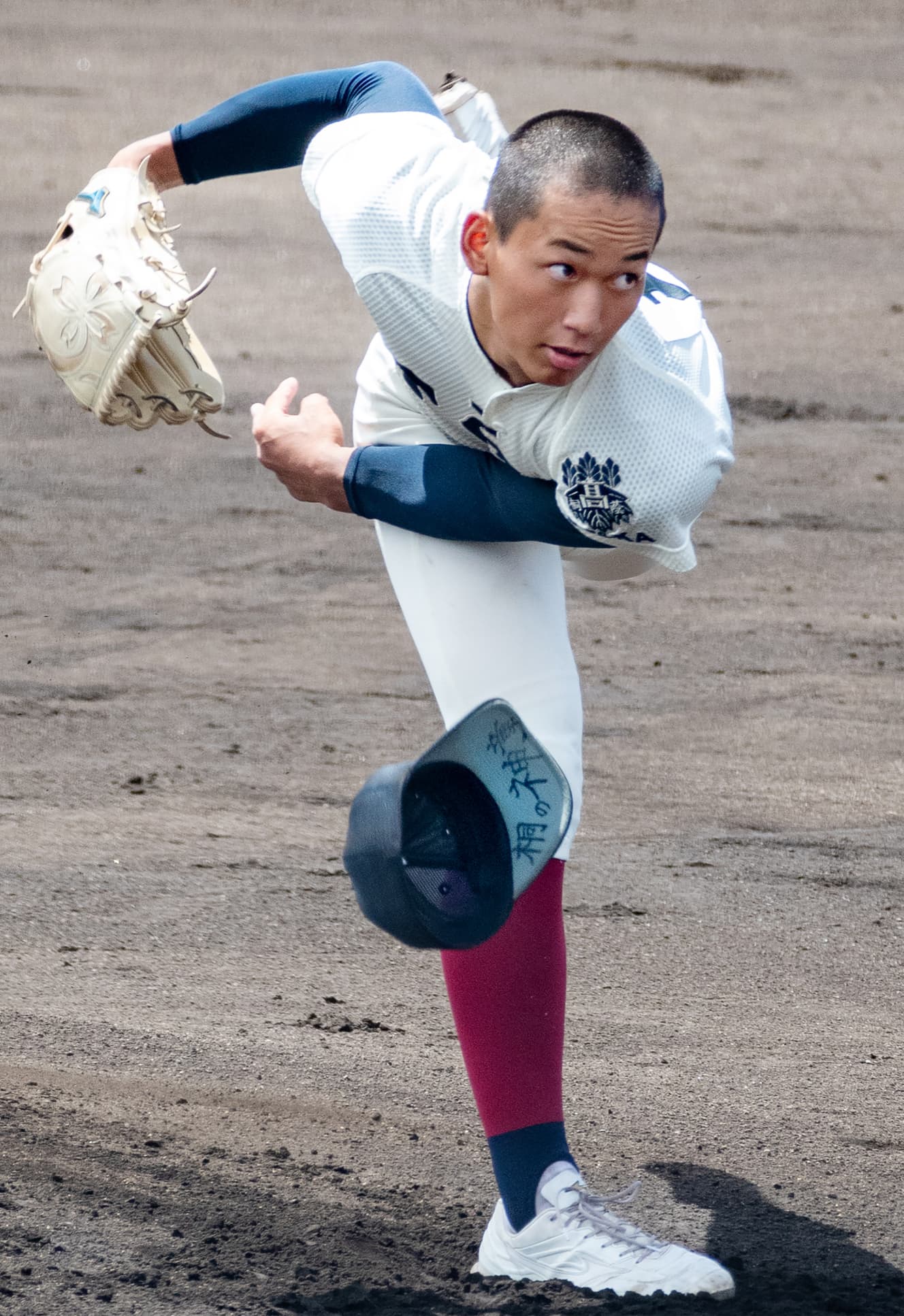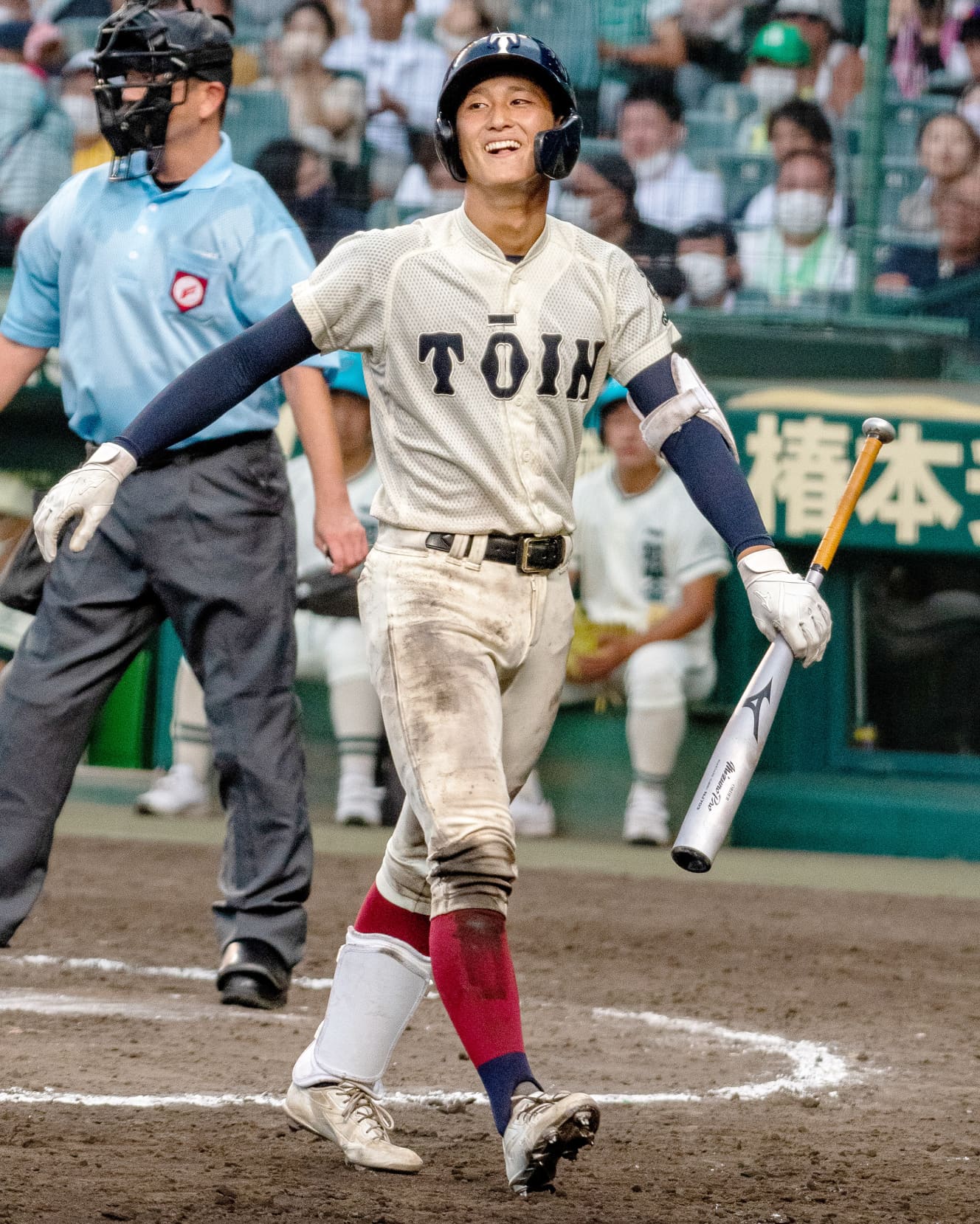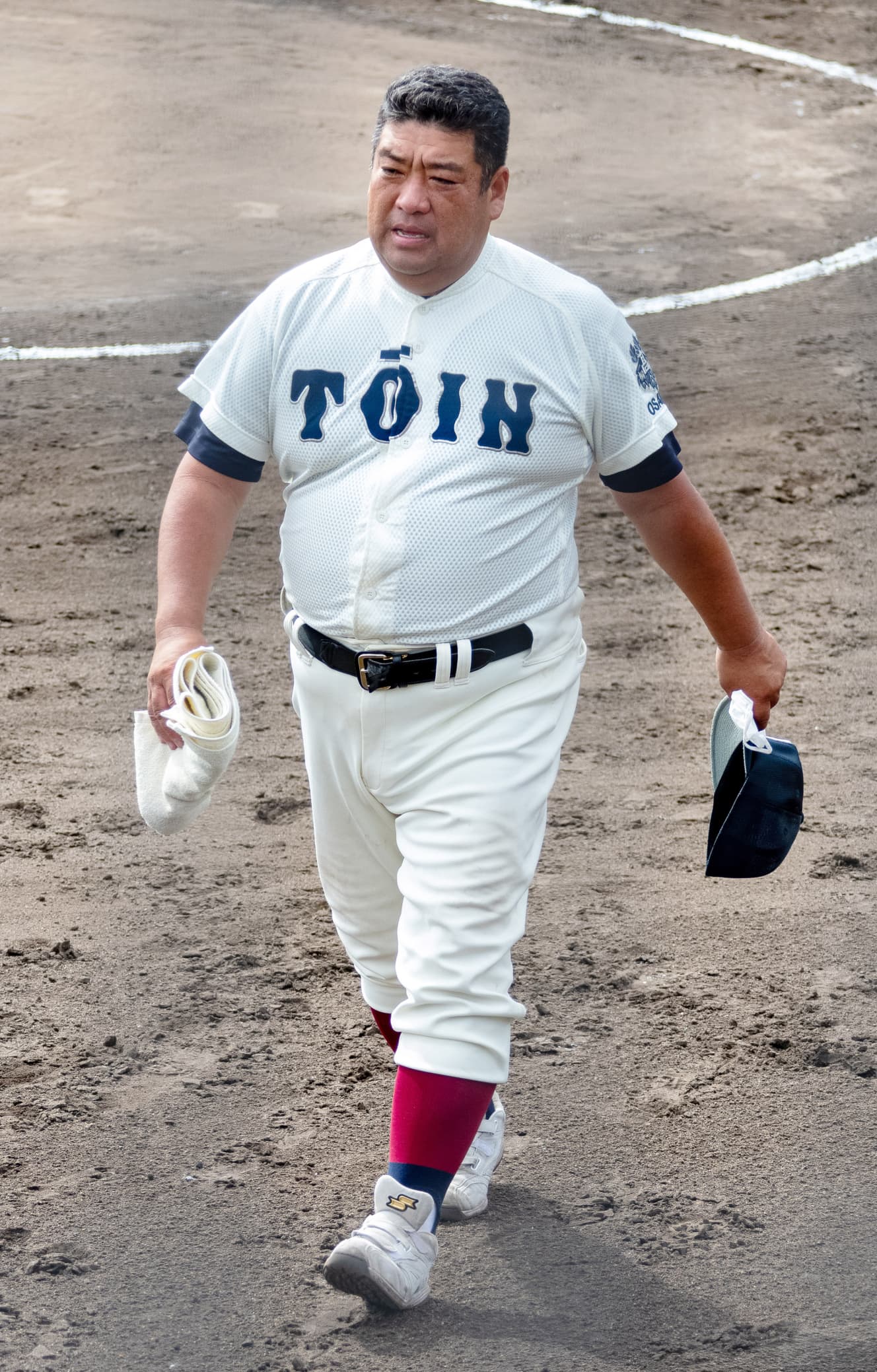The strongest team, the Toin Osaka Toin, unexpectedly lost… Why the “one power” situation still persists
Inside report on the Summer Koshien Scouting Network that Gathers Players from All Over Japan, Practice Games to Give Everyone a Chance, and Coach Koichi Nishitani's Strategic Strategies

The coach of Sendai Ikuei (Miyagi), which won the summer Koshien championship and became the first team to cross the “Shirakawa-no-Seki,” the grand championship banner, dared to mention the name “Osaka Toin” on the podium and continued, “With a team like that as a target, we can go on running even in the dark.
With a team like that as a target, I was able to run even in the darkest of times.
I thought this was typical of Sue, a self-proclaimed Osaka Toin fanatic who has been calling for the defeat of Osaka Toin since 2006, when he took over as manager. Osaka Toin lost in the quarterfinals to runner-up Shimonoseki Kokusai (Yamaguchi). However, no one would argue that they are at the top of the current high school baseball hierarchy, having won the Meiji Jingu Tournament last fall and the Senbatsu Tournament this spring.
Osaka Toin has attracted too many players. Every time the school performs well on the national stage, such critical remarks are made. However, having covered the scouting activities of Osaka Toin, I feel a strong resistance to such opinions. It is a corporate effort, so to speak, to keep an eye out for players of high ability from all over the country and guide them to enrollment through the people involved.” We must not forget that while we are “collecting” the players, we are also “selecting” them from among the many promising athletes who are being recruited.
I believe that the biggest reason for the continued dominance of Osaka Toin, which has won the national championship four times in the spring and three times in the summer since 2012, when Shintaro Fujinami and his teammates won back-to-back spring and summer titles, is the fact that “few players have left the team. As far as I can confirm, there have been only two dropouts in the last 10 years. The more powerful a school becomes, the more likely it is that a small number of players will drop out. Even though the school has a small elite group of around 20 players per grade, the fact that Osaka Toin has so few dropouts is due to the fact that they do not let their reserve players “rot away.
Coach Koichi Nishitani calls the matches between the core “A” team members and the “B” and “C” teams, which are not included in the “A” team, “development matches. Coach Nishitani once said, “Everyone has a chance to be a member of the A team.
While the “A” team is on tour, the remaining players play two games a day, or play a night game on a weekday against a neighboring school to guarantee a few dozen at-bats for the fielder. If they emerge from these games, we will use them as A players.
The system of guaranteeing a fielder a guaranteed number of at-bats is something Nishitani learned from Hokkaido Nippon-Ham.
When I first became a manager, I thought that if a player was not good enough to play in a game, he did not have to play in a game, and that the first step was to train him in practice until he was good enough to play in a game, then he would compete. However, when I learned that even the professional second team guarantees at-bats to its players, it was an eye-opener. Now, I think we should give players as equal a chance as possible, and use players who have risen to the occasion.
Nowadays, many private schools hold retirement games for third-year players who could not make the bench prior to the summer regional tournaments, and the media often report on this as a beautiful story. However, Osaka Toin’s third-year students do not retire until after the summer tournament. Even during the Osaka tournament, players who are not on the roster compete for a spot on the bench.
Every time, we are most concerned about the bench for the Koshien tournament,” commented coach Nishitani after the final game against Rusho-sha in the Osaka Tournament.
In the summer, there are 20 members on the bench for the Osaka tournament, compared to 18 at Koshien. In the Osaka Tournament in summer, there were 20 members on the bench, and in Koshien, 18. This summer, four players were left off the bench for the Osaka tournament, and two, including left-handed pitcher Keisuke Aoyagi, who was not on the roster, made the bench for Koshien. This competition builds an ever-winning team.
Every year in the spring tournament, third-year students and underclassmen who have had few opportunities to play in official games are used to raise the overall level of the team. First-year students with high expectations are used as ball boys (renamed ball persons from this summer’s Koshien) so that they can witness the play of the upperclassmen up close. In the Osaka tournament, Ramal Geevin Ratanayake, a promising first-year cannonballer whose parents are Sri Lankan, was the ball boy. He may be on the bench in the fall.
On the day their dream of winning the Triple Crown in fall, spring, and summer was crushed, Nishitani addressed the 64 members of his team.
I know this is a bit forward, but both members and non-members of the team worked hard every day to win back-to-back championships (in fall, spring, and summer). I am proud of them. It was a good team.”
The captain, Tenma Hoshiko, tearfully shouted to the stands, “I’m sorry!
Sorry!”
It was an apology to his fellow teammates who had competed with him until recently.



From the September 9, 2022 issue of FRIDAY
Interview and text: Yuji Yanagawa
Nonfiction writer